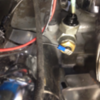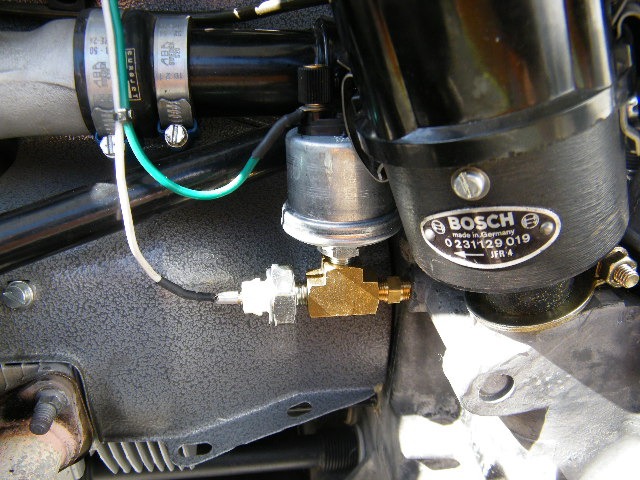The temp range, resistance, on the sender will determine how much and where the needle moves in your Chinese gauge.
If you look at your sender, there should be some #s engraved along the rim, that will tell you the model number, brand, and temp range. See picture #1 bellow. The numbers written in pencil were all taken from the engravings you can see on the sender. The last line of numbers is the model number... which you can then use to find the " replacement part number on the VDO site. ( I attached at TH bottom of this post.)
The attached information that may also be useful to you;
· For stock Type 1 VW engine cases/ and 356s, many engine builders are using OEM VW temperature senders because the are short, don't block oil flow, and will not trigger the pressure sender when installed in the same T fitting.
See picture #2 bellow - for reference to notes 1, 2, 3;
1- On the left is the VDO sender 323-427b, 300f, M10 x 1 thread, 22mm, long.
2- In the center is the OEM VW German made sender of the the same M10 x 1 thread, SHORT 10mm, 150c/300F. VW OEM part number #1H0 919 563 - oil temp sender, 0-150c range, used on for a bunch of 70s to late 90s VW cars. Also Audi cars.
They, both ( 1 and 2), have the same 10-180 Ohm range... The OEM VW short one can replace the M10 thread sender for the aftermarket VDO oil temp gauge with 150c/300f range. The short sender will not protrude into the oil passage like the longer VDO unit. The longer VDO unit can trigger the oil pressure sender.
3 - To the right is the more common and cheaper OEM VW sender part #049 919 501 - oil temp sender, short 10mm, 0-120c range also used for mid-70s to mid-90s VW stuff. And commonly used now for small aircooled engines. I have the VDO version of this one installed in the car, part number 323-088.
4- not pictured, Then there's OEM VW #049 919 563A - oil temp sender, 0-180c range. Same M10 thread and looks just like the sender on the right but used in modern water cooled engines.
Picture #1

picture #2

Also, you can find VDO senders at most local Autozones, NAPA, O'Reilleys, etc... plus Amazon stores... but can also order them on line from many places at discounted prices.
Here is a useful store, witch includes great details- thread, resistance, temp range, and a picture...
- http://www.egauges.com/VDO-Tem...-Senders-s/35438.htm
- https://www.vdo-instruments.co...sensor-only.html?p=1
- https://vdo-webshop.nl/en/34-t...ategory=34&n=125
Hope this helps...









